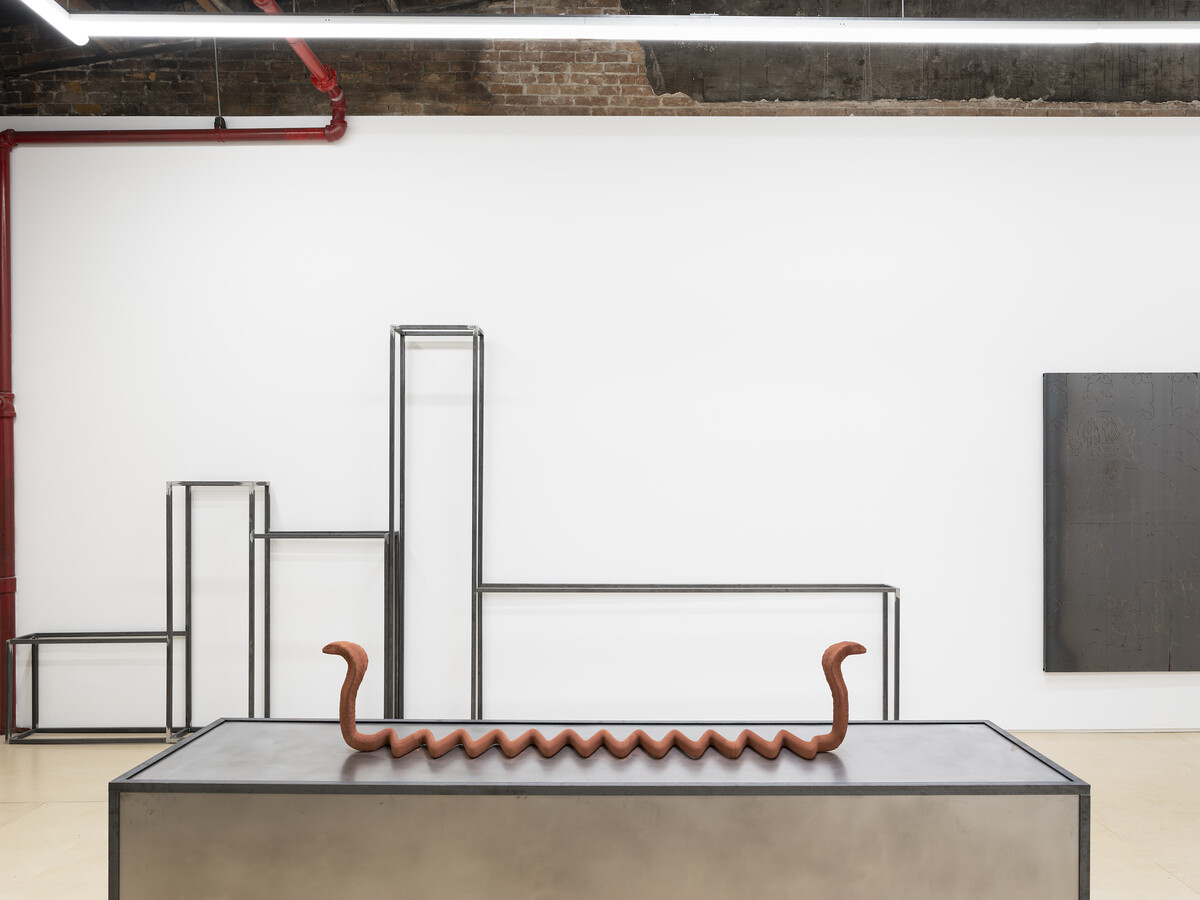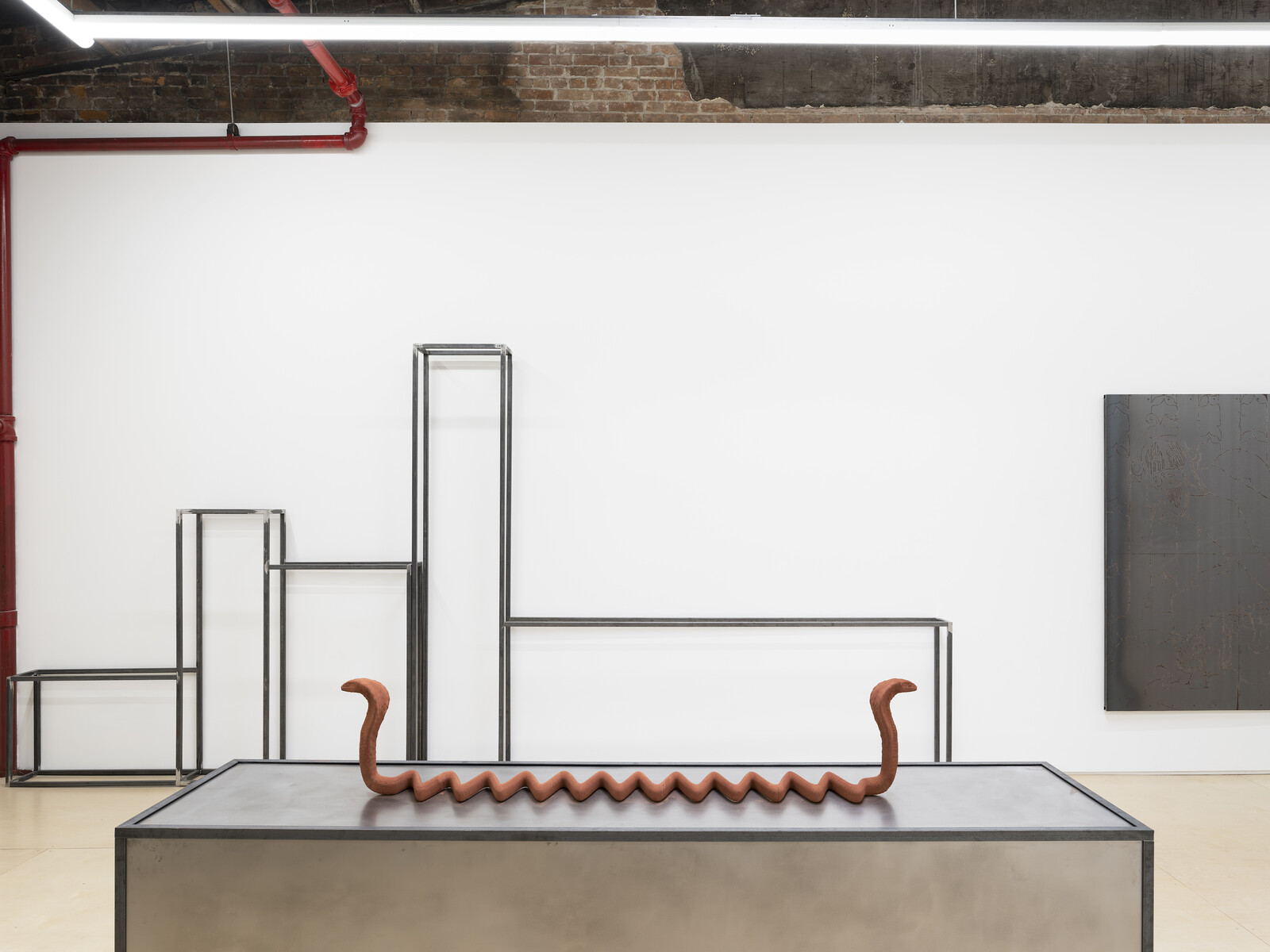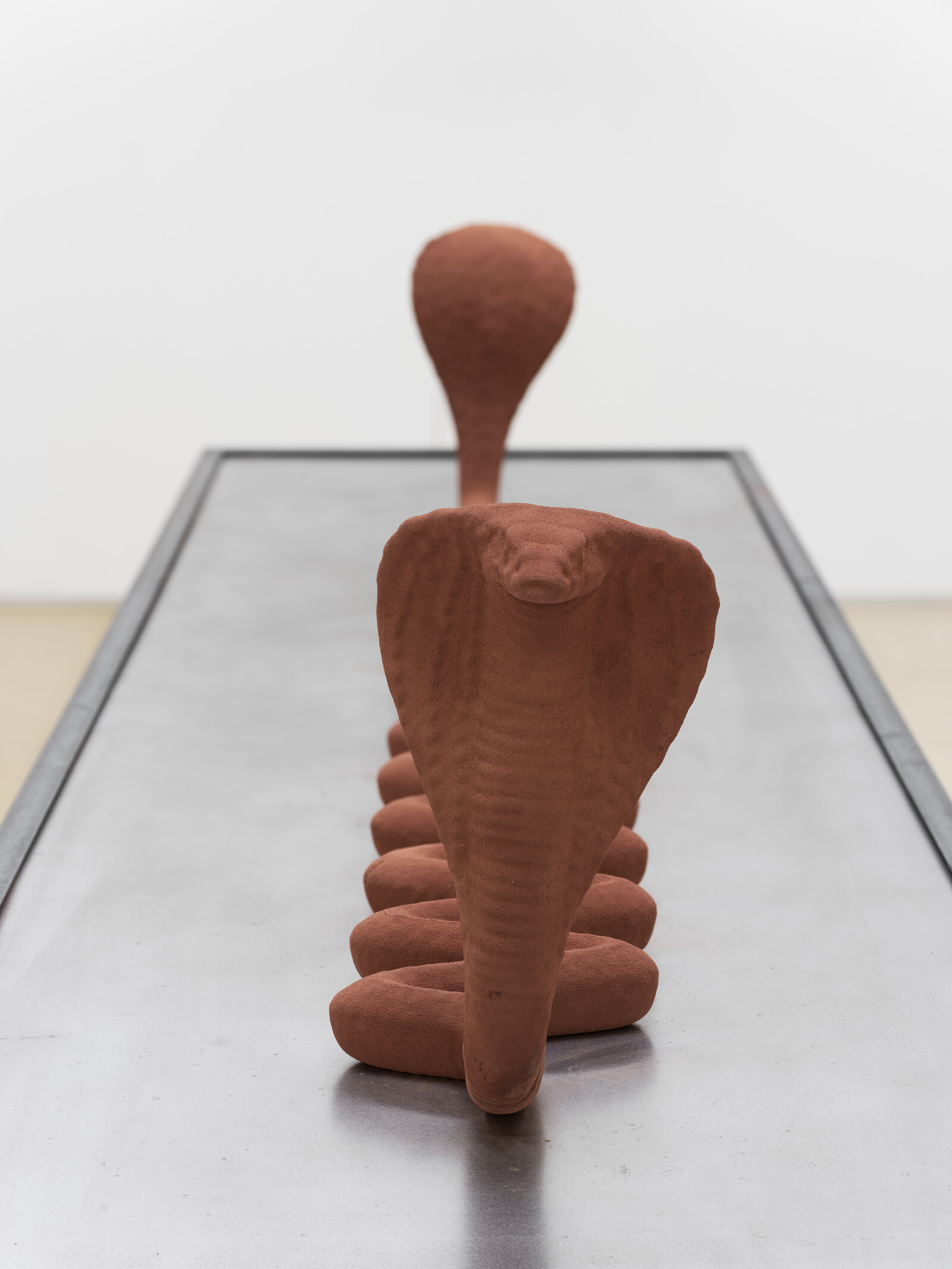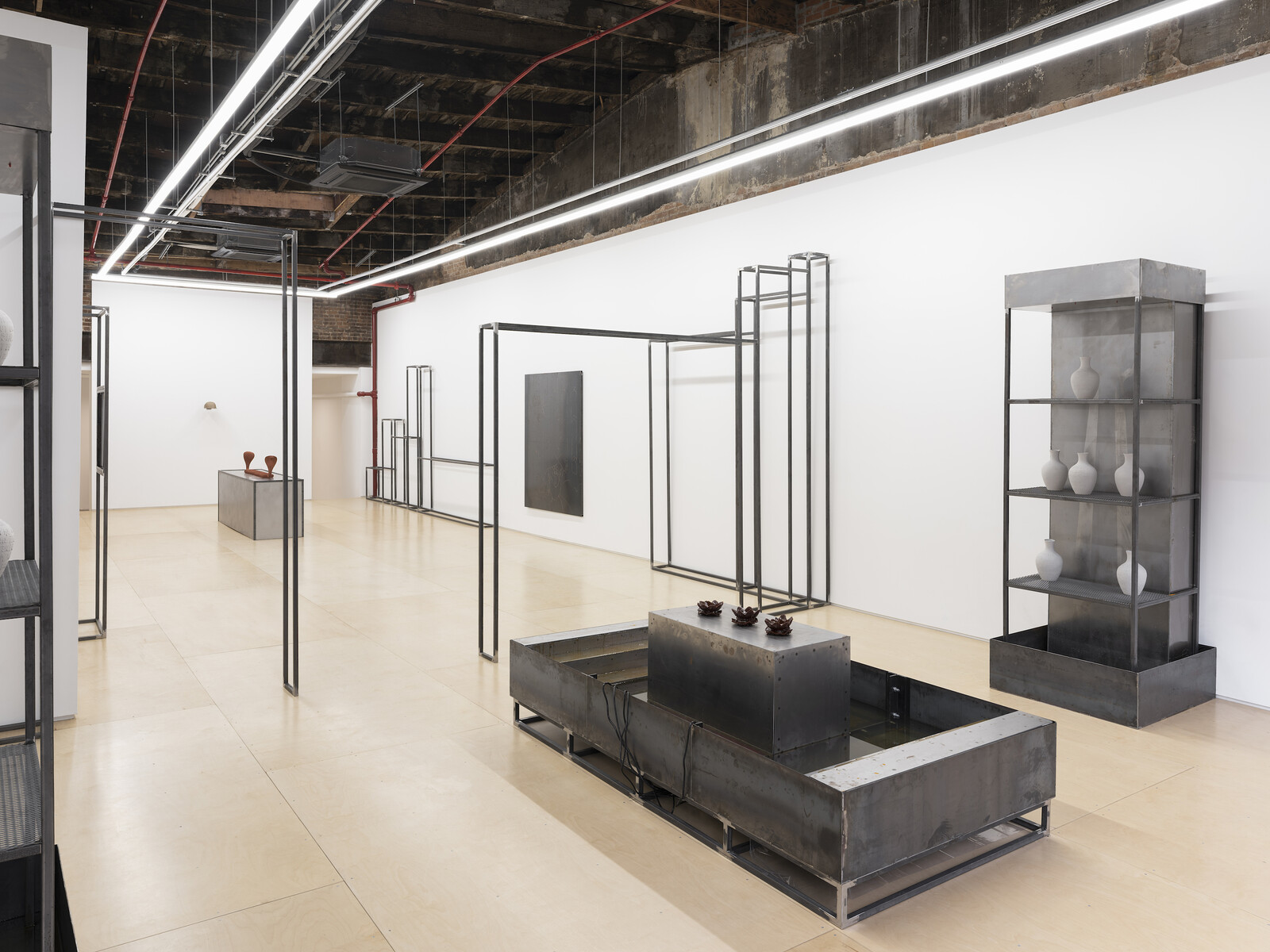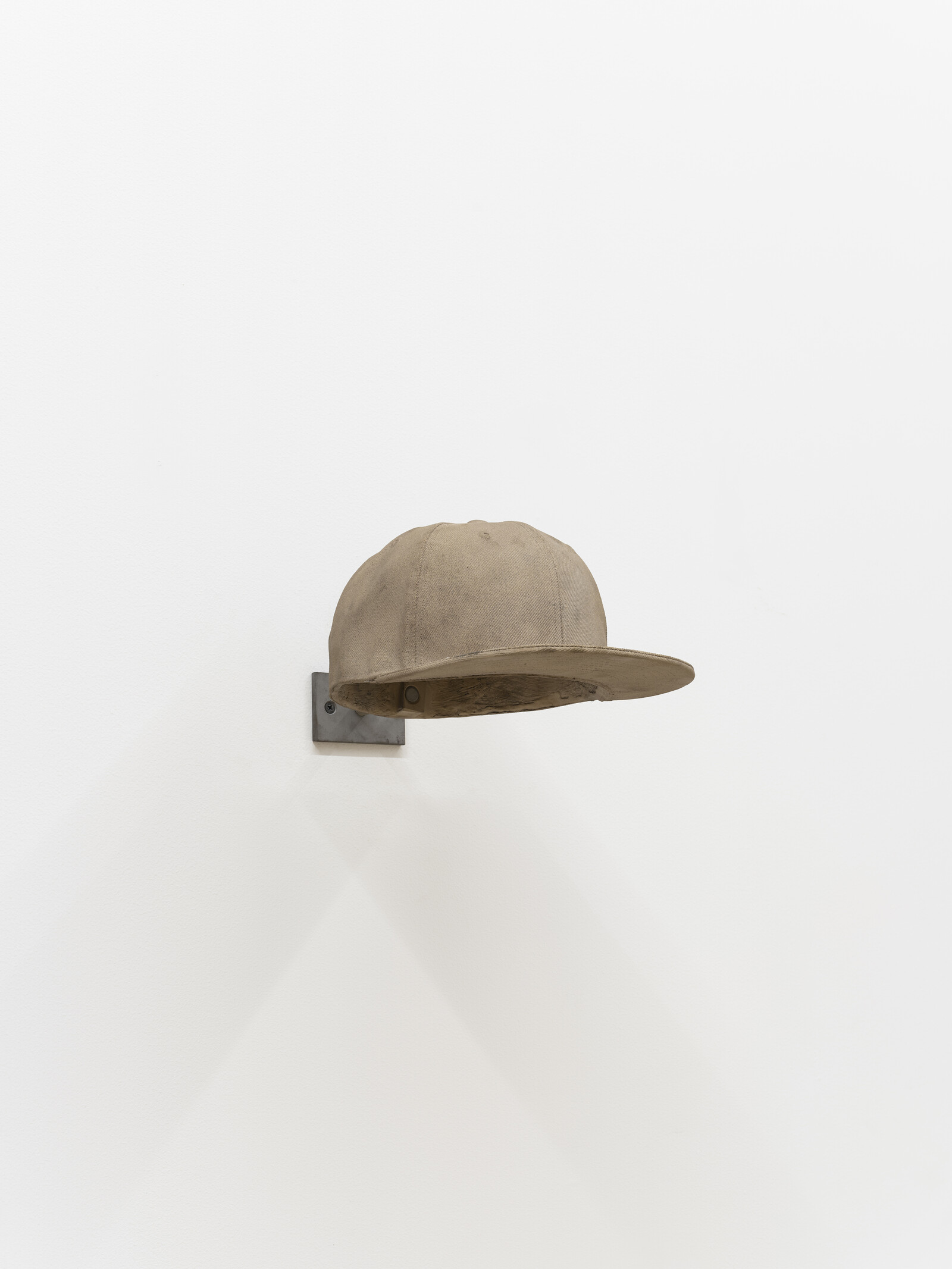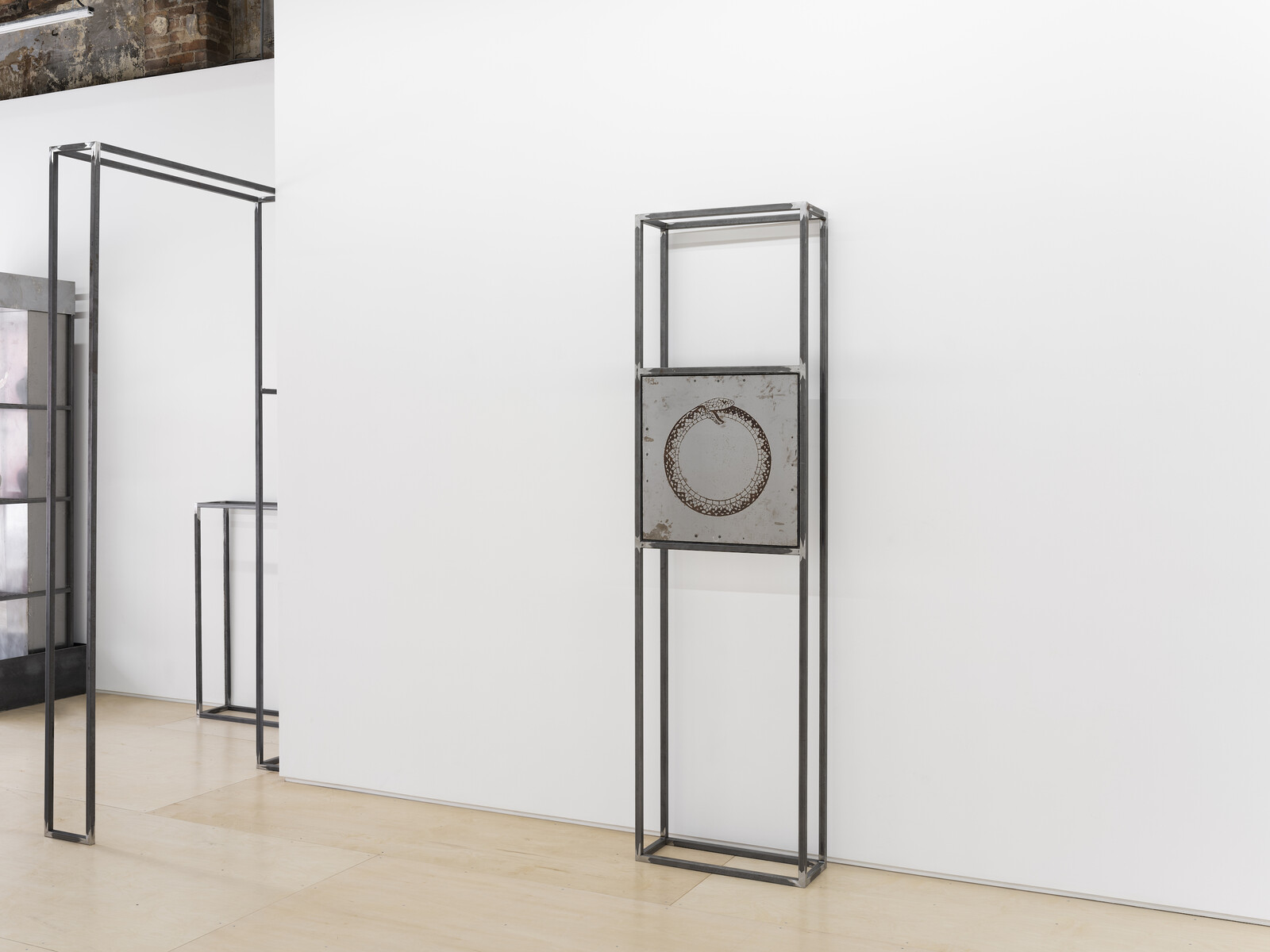September 8–October 22, 2022
At once material and spectral, intimate and diffuse, scent can linger, occupying space and impregnating matter while remaining invisible. And it is the warm, smoky, sweet aroma of bukhoor—a type of incense composed of various aromatic resins and essential oil-infused wood chips that is commonly used across the Muslim world—that hits you first, near the top of the stairs, even before you enter Toronto-based Azza El Siddique’s sophomore show at Helena Anrather. Physiologically linked to the brain’s limbic system—the neurological locus of memory and emotion—the sense of smell is a powerful trigger, eliciting both a visceral and affective response. For El Siddique, bukhoor both invokes and evokes. It references religious spaces and rituals, sacralizing the gallery and our encounters within it. It also conjures up memories of the Sudanese diasporic community in which she grew up, and the many matriarchs who helped sustain it. One of its components is sandaliya, an oil derived from sandalwood that is used during the ritual washing and shrouding of the body before a Muslim burial. Bukhoor signifies care, of both the living and the dead.
El Siddique’s interest in rituals and accounts of death and the afterlife stems from a profound personal loss, the premature passing of her brother and fellow artist Teto Elsiddique in 2017, and she regularly includes references to him and his work in her exhibitions. Affixed to the wall, 7 3/8 (2022) is a sandy brown bronze replica of one of his baseball caps, created through a casting process that captures exquisite detail, such as its woven texture, but destroys the original. In A dog without a master (Rust) (2022) El Siddique carefully etches the contours of one of Teto’s paintings in rust onto a polished steel sheet. The processes and materials employed in these works seemingly preserve otherwise fragile objects, and memories that may have accrued to them, for posterity, yet they remain tainted by the specter of destruction and decay.
El Siddique contextualizes such personal memento mori within iconographies and mythologies derived from ancient Egypt, especially those of the Nubian Dynasty. The cold clinical precision of her displays—austere Minimalist forms made of industrial materials like stainless steel—cannily tempers any impulse to exotify such subject matter while attuning the viewer to the entropic nature of the transformations she investigates: combustion, corrosion, erosion, remembering, forgetting, life, death, grief, desire. In this show, a series of skeletal rectangular steel structures placed along the gallery walls, like materializations of AutoCAD renderings of archaeological ruins, transpose the ghost of a sacred architecture of the past onto our present, dividing the space into an antechamber and an inner sanctum.
gate of flaming-front, hidden back (2022), a 3D-printed sculpture of a double-headed cobra, is the focus of the former. Placed on a long metal plinth, in line with Teto’s cap, its slender body zigzags between raised-up and flared hoods at either end. The sculpture is powder-coated in iron oxide, a surface treatment that recalls the color of terracotta but chemically recreates a coat of rust. This marker of decay echoes in all that which is and all that is not (Rust) (2022), an image in rust on steel of an ouroboros, a circular symbol for eternity or infinity that shows a snake eating its own tail. In contrast to the more familiar western symbol for infinity—a smooth and continuous if twisted loop—the ouroboros emphasizes the inevitability of change and rupture in the cycle of life. It is an image of time as an endless return, alternating between annihilation and regeneration.
While El Siddique previously used glowing red heat lamps to burn incense, here bukhoor cast into a trio of waterlilies is placed on a heated platform resembling a flat top grill. Entitled Temple of a million years (2022), the altar marks the end of the sacred axis that began with Teto’s cap. By the time I visited the show, ten days after it opened, the floral forms—a symbol associated with Dedun, the shape-shifting gender-fluid Nubian god of incense, and through its trade, of wealth and prosperity—had cooked down to thick black crusts, each encircled by a halo of deep red resin. A delicate wisp of perfumed smoke still emanated out of the center one.
This altar is flanked by a pair of metal cabinets entitled the Book of two ways (2022). Each is outfitted with a fountain-like water circulation system which trickles down the back wall, eventually streaking it with rust, and drips onto clay vessels decorated with text adapted from the titular guidebook to the ancient Egyptian underworld, causing them to slowly disintegrate. Just as the melting vases muddy the water, the words become less and less intelligible until they disappear completely. Though enacted through water rather than fire, this erosion is analogous to the burning of bukhoor. No longer manifest, the text’s function shifts from explicit to implicit, from imparting information or meaning, or citing a specific cultural heritage or private past, to something altogether more mysterious and magical. Through ritualized erasure it becomes an incantation or talisman, a missive that could be malignant or apotropaic, whose power, like that of scent, derives precisely from its absence, and from its lingering persistence in and as memory.
